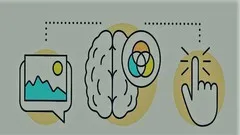Free Online Design Thinking Courses and Certifications 2024
Design Thinking is a creative problem-solving process that helps people and organizations to develop innovative solutions. It is suitable for people from all fields, from business to engineering, and is often taught in courses such as Human-Centered Design and Design Thinking. It is a great way to develop creative solutions to complex problems.
Popular Courses
















Design Thinking Courses
Career Trends
Career Prospects | Average Salary | Position Overview |
Designer | $68,726 per year | A designer is responsible for conceptualizing and bringing visual ideas to life. Depending on their specialization, a designer's work can encompass a wide range of tasks, from designing print materials like magazines to crafting digital interfaces or even creating navigational systems for public spaces. |
Full Stack Architect | $163,580 per year | A Full Stack Architect based in the US provides guidance on selecting the appropriate technology stacks and defines principles and key constraints for solution components. They work with the team to establish security and scalability approaches based on these principles. |
Educational Paths
1. Online courses: There are many online courses available that cover different aspects of Design Thinking, such as problem-solving, user research, prototyping, and testing. Some popular platforms that offer Design Thinking courses include Coursera, edX, and Udemy.
2. Workshops and bootcamps: Many organizations and design schools offer workshops and bootcamps on Design Thinking. These programs are typically short-term and provide hands-on experience in applying Design Thinking to real-world problems.
3. Degree programs: Several universities and design schools offer degree programs in Design Thinking, such as Master of Design, Master of Fine Arts, and Master of Arts in Design. These programs provide a comprehensive education in Design Thinking and often include courses in design research, ideation, prototyping, and user testing.
4.Certifications: Some organizations offer certifications in Design Thinking, which can be useful for professionals who want to demonstrate their expertise in this field. For example, the Design Thinking Certification offered by the Design Thinking Institute covers the principles and tools of Design Thinking and how to apply them in practice.
Frequently Asked Questions and Answers
Q1: What are the 5 stages of Design Thinking?
The 5 stages of the design thinking process are: Empathize, Define, Ideate, Prototype, and Test. In the Empathize stage, problem-solvers gain a better understanding of the wants, needs, and objectives of the users they are targeting. The Define stage focuses on defining the problem at hand. Ideate is the stage where creative solutions are generated. Prototype is the stage where solutions are tested and refined. Finally, Test is the stage where the solutions are tested with users to ensure they meet the needs of the users.
Q2: How to run a successful design thinking workshop?
Step 1: Select the Team, Time, and Location When running a successful design thinking workshop, it is important to select the right team. Having the right skill sets in the room is essential for generating innovative ideas with practical applications. Additionally, it is important to select a time and location that is convenient for all participants. Step 2: Compile the Current Landscape Before the workshop begins, it is important to compile the current landscape. This includes researching who the design is being created for, what the current trends are, and what the current challenges are. Step 3: Build the Workshop Slides Once the current landscape has been compiled, it is time to build the workshop slides. This includes creating slides that will help guide the workshop and provide the participants with the necessary information. Step 4: Send the Pre-Workshop Email Before the workshop begins, it is important to send out a pre-workshop email. This email should include the workshop agenda, the slides, and any other relevant information. By following these steps, you can ensure that your design thinking workshop is successful.
Q3: How to introduce design thinking?
Design Thinking is an effective way to approach problem-solving and innovation. To introduce Design Thinking at your organization, there are four key steps to follow: focus on the problem to be solved, ensure your team has the necessary design thinking skills, hold regular debriefs to discuss progress, and embrace the feedback loop to ensure continuous improvement. By following these steps, your organization can successfully implement Design Thinking and reap the benefits of creative problem-solving.
Q4: What are the steps in design thinking process?
What are the steps of Design Thinking? Design Thinking starts with Research and Empathy to build a strong foundation. Then, the process moves on to Define, where choices are made. After that, Ideate, where new ideas and solutions are created. Finally, Prototype and Test, where the solutions are tested and refined. This iterative process helps to ensure that the best possible solution is created.
Q5: What is the main goal of design thinking?
The goal of the design thinking process is to generate solutions, products, or services that are desirable for the user, economically viable from a business perspective, and technologically feasible.
Q6: What Design Thinking courses can I find on AZ Class?
On this page, we have collected free or certified 114 Design Thinking online courses from various platforms. The list currently only displays up to 50 items. If you have other needs, please contact us.
Q7: Can I learn Design Thinking for free?
Yes, If you don’t know Design Thinking, we recommend that you try free online courses, some of which offer certification (please refer to the latest list on the webpage as the standard). Wish you a good online learning experience!
ADVERTISEMENT
